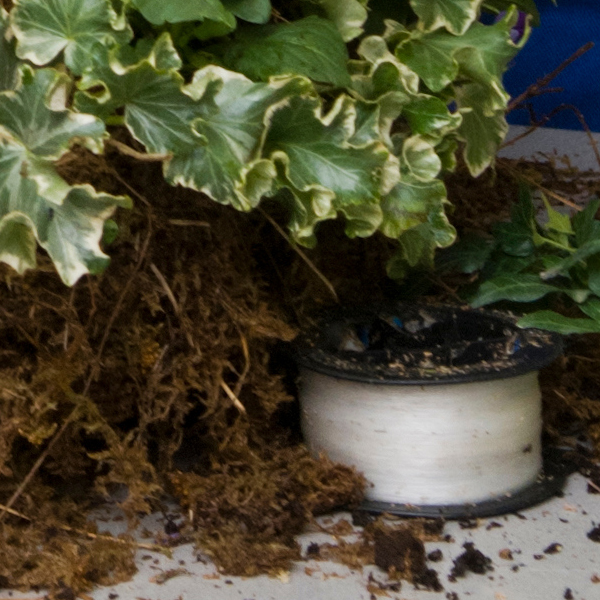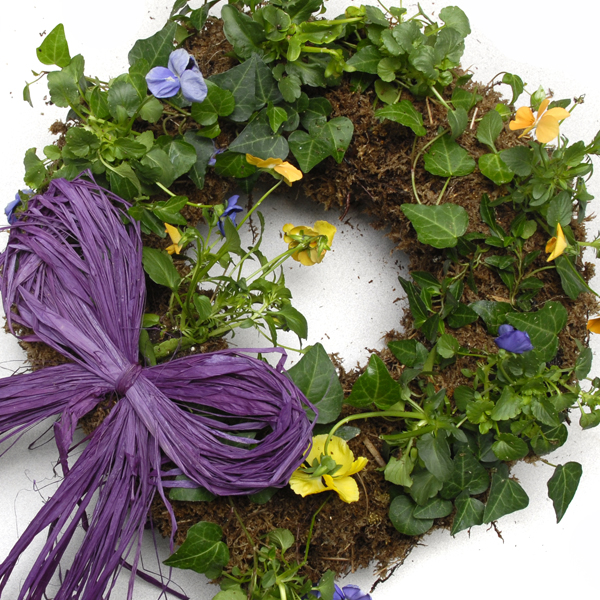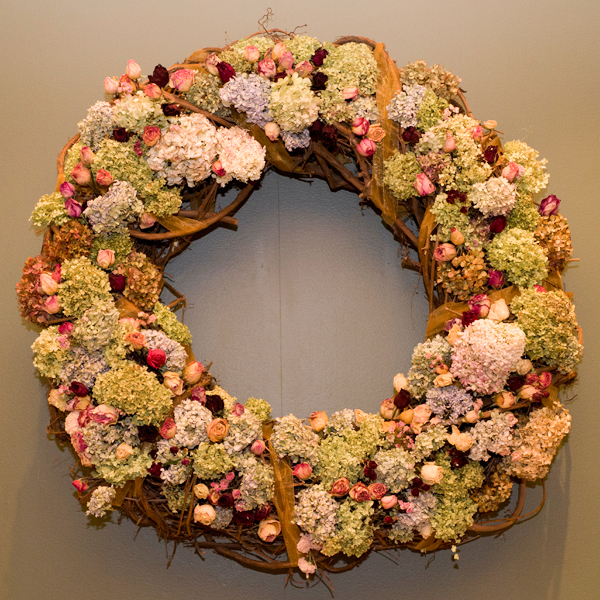Midwinter
Centuries ago, certain plants became part of midwinter celebrations because their evidence of life in the bleak midwinter was a promise of spring to come: holly, ivy, berries, pine trees. Plants from your own landscape can bring an echo of last year's garden and a promise of next year's to your holiday decor.
It's easy to embellish a purchased evergreen wreath with garden treasures you've collected, says Nancy Clifton, horticulture program specialist at the Garden. The obvious place to start your decor collecting is with your evergreen trees and shrubs, such as spruce, fir, pine, arborvitae, and yew. Forage under evergreens and you may find cones. Boxwood or snippets of ivy offer a contrast in leaf shape and texture to evergreen needles. Prune branches from inconspicuous parts of your shrubs, and bear in mind that many evergreens, such as arborvitae, won't resprout if you cut back as far as the bare, brown part of a branch.
For a wreath that combines deep green with tones of golden brown, dried hydrangea blossoms are a natural. But have you thought of using the dried flowers of Russian sage or goldenrod, lavender or astilbe, asters or penstemon? Or the seedheads of grasses such as northern sea oats?
To add a natural splash of red, Clifton suggests small branches of red-twig dogwood or the furry scarlet fruits of staghorn sumac. Further fruit possibilities include rose hips, or berries from viburnum or juniper shrubs.
You also can forage in the vegetable garden. Consider sprigs of rosemary or dried dill seedheads. Try drying colorful small peppers or okra pods at harvest time. Other seedpods can also add interest to a wreath or a table decoration: baptisia, evening primrose — even catalpa.



The Technique
If you have enough evergreen branches, you might consider making your own wreath.
Clifton is expert at the technique:
At the craft store, buy a wire wreath frame and a package of 22- to 24-gauge paddle wire — thin, flexible green-painted wire that comes wrapped around a flat paddle.
From the tips of branches, cut your greens about one-third to one-half as long as the ring is wide. Place the ring on the table with the flat side down and the curved side up. Gather a bundle of several branches, with their growing tips fairly even, in your left (or less dominant) hand, and use your other hand to wrap their cut ends firmly together with the paddle wire. Lay the bunch of branches against the curved side of the ring and secure it with the paddle wire, lifting up the ring to pass the paddle underneath. Repeat with other bunches of branches, overlapping the cut ends of one bunch with the branch tips of another so the cut ends don't show, and work your way around the wreath.
Don't cut the wire; instead, keeping using the paddle to guide it around each bunch of branches and then under and around the ring to secure the bunch. As you go, frequently lift up the wreath to make sure your placement is consistent and the wire and cut branch ends don't show.
When you have gone all the way around, shove the cut ends of the last bunch of greens under the branch tips of the first and secure it with wire.
An evergreen wreath, whether homemade or store-bought and home-decorated, is an outdoor decoration for the door or exterior wall. Indoors, it would quickly dry out and leave a mess. Even for outdoor use, Clifton recommends spraying your wreath with an antidessicant (sold at garden centers) to make it last longer.
Indoors, you could use dried plants from your garden to decorate a purchased grapevine wreath for the holidays. Use a glue gun to make sure they stay put. Dried plants can also be used to create an everlasting wreath for year-round use. The Garden’s detailed guide will help you create a lasting treasure.
It's also possible to make a wreath of living plants, such as English ivy. The Garden offers tips on making an ivy wreath that will last through the winter months.
It wouldn't be wise to hang the ivy wreath, packed with damp soil, against an interior wall, Clifton says, but it could be lovely laid flat as a table decoration for a special party. The rest of the time, hang it outside on a gate or on the porch wall.
Though ivy is generally hardy, plan to bring it into an unheated garage or other protected space in very cold weather, since it will not have enough soil volume to protect its roots from freezing. Water frequently, and with care, your wreath can live on to grace the garden when summer comes again.
Beth Botts is a garden writer and speaker who lives and gardens in Oak Park, Illinois.


